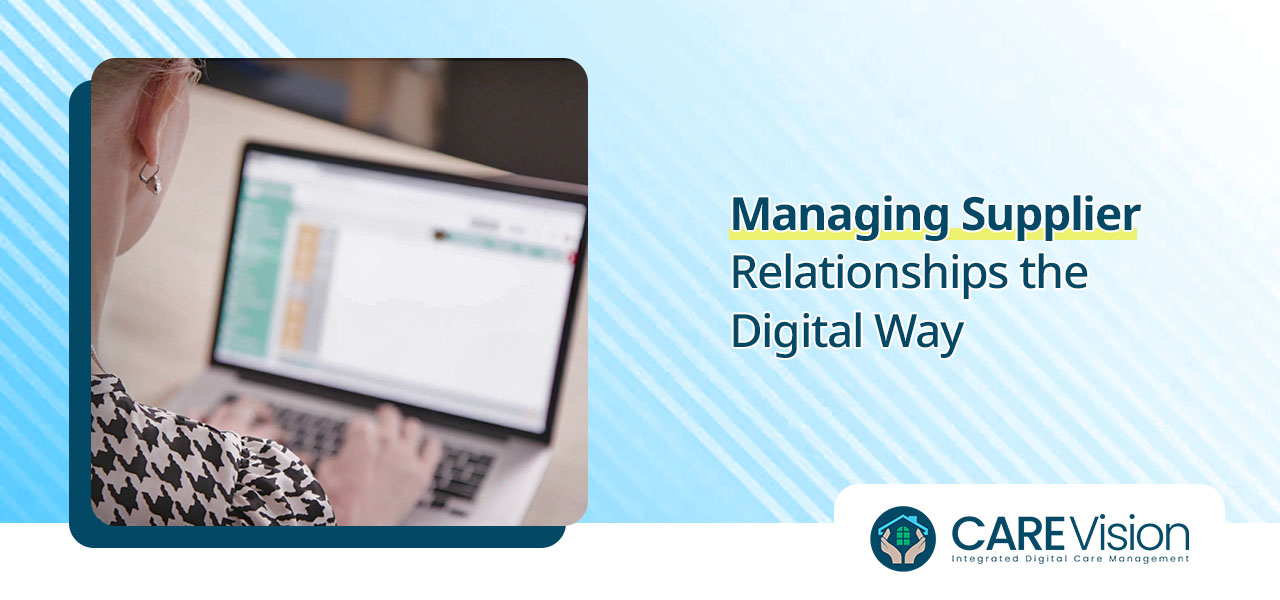For many care home managers, auditing and reporting procedures can feel daunting. The various tasks involved can take a long time to sort out and require a lot of paperwork and effort to get right. Consequences for making errors or failing to complete audits on time can be serious. However, the process can be simplified with the introduction of digital tools, such as Care Vision’s care management software. Moving from paper-based reporting and record-keeping to digital software also has many other benefits when it comes to sorting out audits and reports.
What is an audit?
Auditing is the process of obtaining evidence that shows what you are doing to run your care home, and using it to check that your regular practices are in line with the relevant policies, legislation and industry guidance and regulations. The key is organisation and keeping meticulous records as you go along. This dramatically reduces the stress that an audit can bring. The more information you already have available, the less time and energy you will use looking for it, and the better informed your evidence base will be.
Informed, organised auditing and reporting keeps everyone safe – residents, staff and management alike. If any concerns do arise, it gives the care home a valuable chance to put things right and reflect on what went wrong. The worst thing to do is hide anything worrying, as this allows the situation to escalate and can seriously affect trust levels and safety in the longer term. Using a digital care management system to inform and carry out your audit will help speed up the process sand ensure clear, accurate and comprehensive reporting.
What needs to be audited?
Each care home will have a different set of criteria for auditing purposes,. Although there are several areas that will be common to most, if not all care providers. The key priority is to monitor all areas affecting the service users and their safety and wellbeing, as well as staff and visitors on site. There should also be clear evidence of continual improvements and self-analysis. Some areas that are commonly covered in care home audits and reports include:
- Quality management systems
- Care planning
- Infection control
- Covid-19 protocols
- Falls, injuries and first-aid incident reporting
- Health and safety
- Fire safety
- Kitchen and food hygiene
- Staff training
- Data protection and handling
A care management system like Care Vision has functions for reporting all relevant information for these areas and more. Data can be input straight away and in real-time, providing reliable time stamps and timelines for checking back as required. Typing in the details directly onto the system stops misunderstandings from arising over illegible handwriting or lost pieces of paper. Data can also be compared to industry guidelines, policy recommendations and KPIs to make sure each area remains on track.
How to plan an audit
Once the information has been added to the digital care management system, the audit can take place, There are various stages that need to be followed for this to happen. First of all, the audit must be planned. Aspects of planning include timescales, scope of the audit, who will undertake each task and how the auditing programme is to be defined. For example, does it need to follow correct CQC auditing procedures, or is it an internal and informal process? Next, the audit is implemented, with all information gathered and ticked off against the list of items required.
After that, the details are checked and the findings analysed and compared to industry best practices, previous audits and stated goals. Areas for improvement are identified and marked for action, while things that are going well are analysed for lessons to apply elsewhere. Then, the auditing programme is reviewed to see what went well and how it could be improved for next time. Finally, improvements are put in place and the various stages implemented started again when the time comes to start the whole audit process again. Auditors need to be methodical, unbiased and competent and not afraid to point our areas for improvement and issues of concern. They must be prepared to keep an open mind and listen and observe very carefully to get the full – and truthful – picture. Again, a digital reporting tool is a huge help with this, as the data is easy to access and reports can be compared to look for areas of interest or concern.






